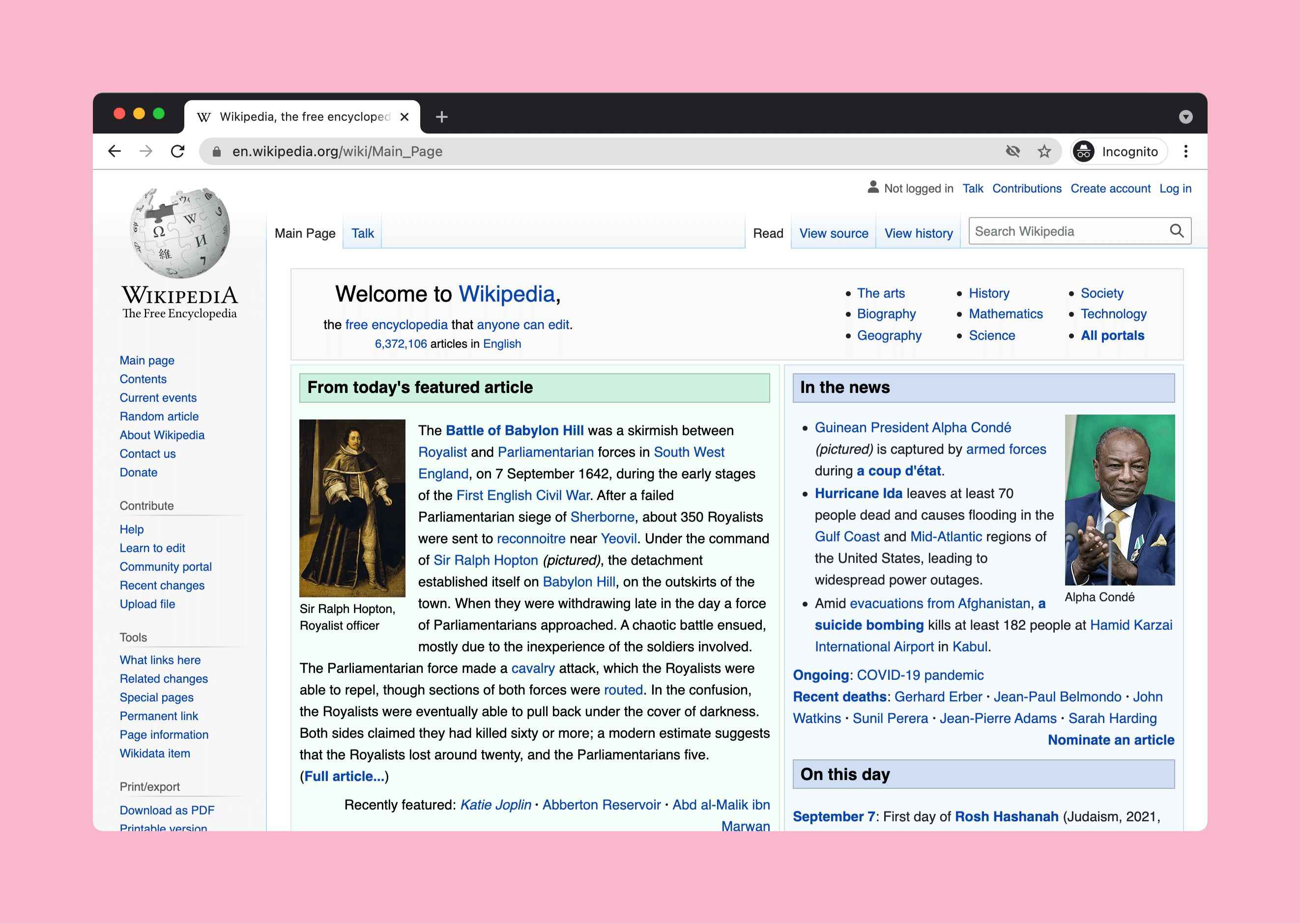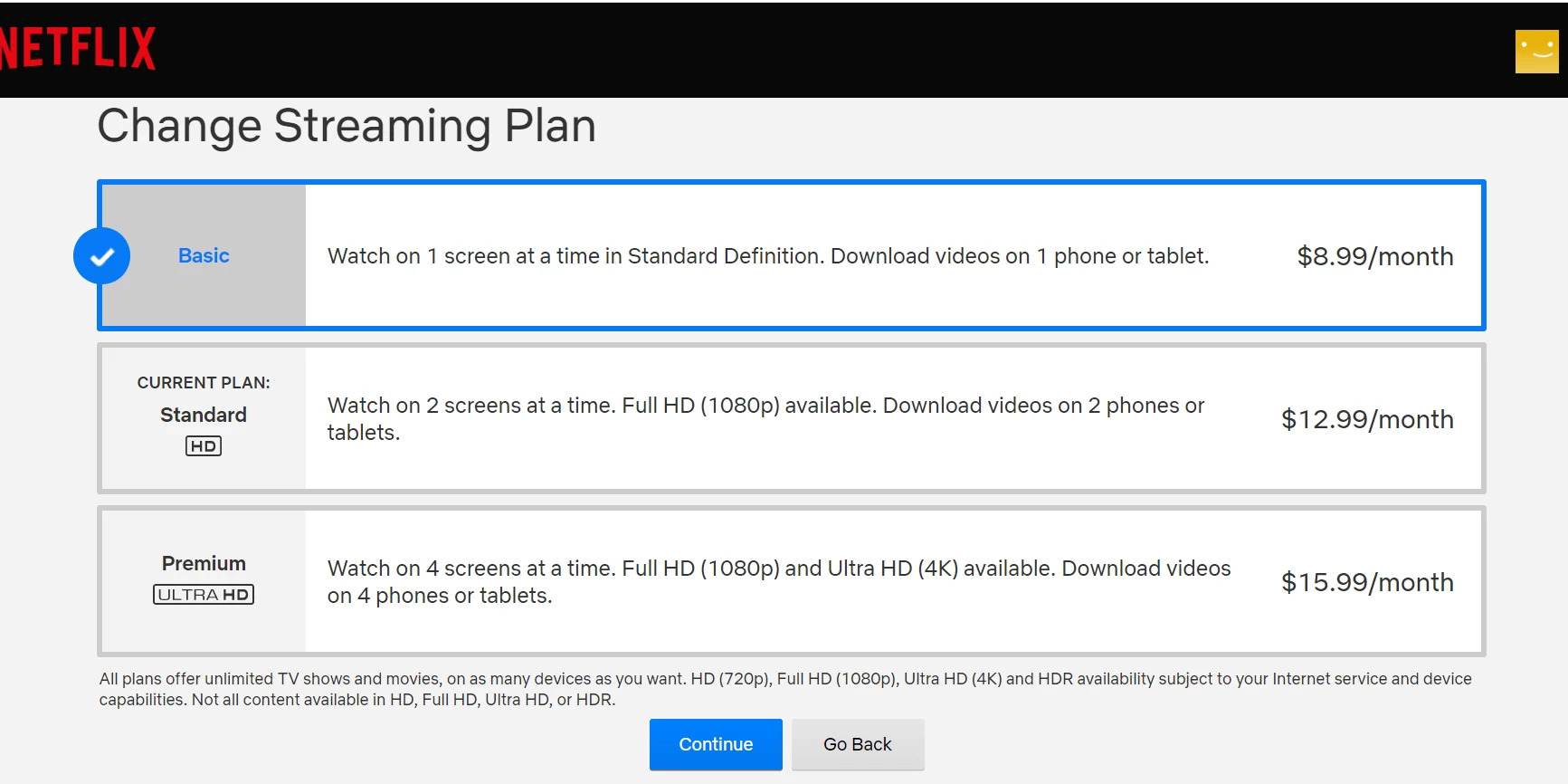Introduction
Have you ever come across a website that you found incredibly useful or interesting, and wished you could access it even when you’re offline? Whether it’s for research, reference, or simply the convenience of having the information at your fingertips, being able to download an entire website for offline viewing is a valuable capability.
In this digital age, where connectivity is often taken for granted, there are still situations where internet access might be limited or unreliable. Perhaps you will be traveling to a remote location with no internet access, or maybe you want to have a backup of a website in case it goes offline or undergoes significant changes.
Regardless of the reasons, there are several methods available to download an entire website for offline viewing. These methods range from using specialized software to command line tools and web scraping techniques. Each method has its own pros and cons, and the choice depends on factors such as the complexity of the website, the desired level of customization, and your technical proficiency.
In this guide, we will explore different methods to download a website for offline viewing and provide tips on how to choose the best method for your specific needs. So, let’s dive in and discover how you can have your favorite websites within reach even when there’s no internet connection.
Why Download a Website for Offline Viewing?
Downloading a website for offline viewing offers numerous advantages that can enhance your browsing experience and ensure access to valuable information even in the absence of an internet connection.
Firstly, offline viewing allows you to have uninterrupted access to a website, regardless of your internet connection status. This is especially useful when you’re traveling or in areas with limited or no internet access. With a downloaded website, you can refer back to the content, read articles, view images, or access any other information you need without relying on an internet connection.
Furthermore, downloading a website can serve as a backup in case the website goes offline or undergoes significant changes. Websites can sometimes be taken down temporarily for maintenance or updates, or even permanently. By having a locally saved copy of the website, you can still access the content even if the original website becomes inaccessible.
Another benefit of downloading a website is the ability to preserve important information or resources for future reference. Websites that contain valuable research papers, tutorials, or educational materials can be saved for offline use. This not only ensures access to crucial information but also saves time and effort in searching for and retrieving the content again in the future.
Offline viewing of websites can also be helpful for web developers and designers. It allows them to study and analyze the structure, layout, and functionality of a website, even without an active internet connection. This can be useful for learning new design techniques, troubleshooting issues, or gathering inspiration.
Finally, downloading a website can provide a more secure and private browsing experience. By accessing a locally saved copy of a website, you can avoid potential security risks or privacy concerns associated with browsing the internet. This is particularly important when dealing with sensitive or confidential information.
In summary, downloading a website for offline viewing offers convenience, accessibility, and peace of mind. Whether for personal use, professional purposes, or as a backup, having a locally saved copy of a website ensures continuous access to valuable resources, regardless of internet connectivity.
Methods for Downloading a Website
There are several methods available to download an entire website for offline viewing. Each method has its own set of tools and techniques, catering to different levels of technical expertise and customization requirements. Here are some common methods:
- Using Website Downloading Software: This method involves using specialized software designed to download and save an entire website onto your computer. These software programs typically offer various options for customizing the download, such as selecting specific pages, filtering out unwanted content, and preserving the site’s structure and formatting. Some popular website downloading software includes HTTrack, WebCopy, and SiteSucker.
- Command Line Tools for Downloading a Website: For more advanced users comfortable with command line interfaces, there are command line tools available for downloading websites. These tools often provide more granular control over the download process and can be automated for regular updates. Examples of command line tools include Wget and Curl, which allow you to specify options such as recursive downloads, limiting the depth of the download, and managing cookies.
- Using a Web Scraper: Web scraping involves extracting data from web pages, and it can also be utilized to download an entire website. Web scraping tools such as BeautifulSoup and Scrapy allow you to crawl through the website’s pages, fetch the relevant content, and save it locally for offline viewing. This method provides flexibility in selecting specific elements or sections of the website to download.
- Downloading a Website Using a Browser Add-on: Some web browsers offer add-ons or extensions that enable you to download websites with a simple click. These add-ons create a local copy of the website and provide options for customizing the download, such as excluding certain file types or limiting the depth of the download. Notable browser add-ons for website downloading include WebScrapBook for Mozilla Firefox and Save Page WE for Google Chrome.
Each method has its own set of advantages and considerations. The choice of method depends on factors such as the complexity of the website, the desired level of customization, and your technical proficiency. It’s important to carefully evaluate the options and choose the method that best suits your needs.
Regardless of the method you choose, it’s essential to exercise caution and respect the website’s terms of use and copyright restrictions. Downloading website content should be done solely for personal use or under explicit permission from the website owner.
Using Website Downloading Software
One of the most common and user-friendly methods for downloading an entire website is by using specialized software designed for this purpose. Website downloading software offers a convenient and customizable way to save a website’s content for offline viewing. Here’s how you can use website downloading software:
- Choose a Website Downloading Software: There are various website downloading software available, each with its own features and capabilities. Popular options include HTTrack, WebCopy, and SiteSucker. Research and select a software that suits your needs and is compatible with your operating system.
- Install and Launch the Software: Download the software from the official website and follow the installation instructions. Once installed, launch the software on your computer.
- Configure the Download: Before initiating the download, you’ll need to configure the settings. This includes providing the URL of the website you want to download, specifying the download location on your computer, and customizing any additional options available, such as excluding specific file types or directories.
- Start the Download: Once you’ve configured the settings, start the download process. The software will now start retrieving the website’s pages, assets, and other associated files and save them to your designated download location.
- Monitor the Download Progress: Depending on the size and complexity of the website, the download process may take some time. The software will typically display the progress of the download, including the number of files downloaded and any errors encountered.
- Access the Downloaded Website: Once the download is complete, you can navigate to the designated download location on your computer to access the downloaded website. Open the website’s homepage or any other page using your preferred web browser, and you’ll be able to browse the website offline.
Website downloading software offers flexibility in customizing the download. You can choose to download specific pages or sections of the website, exclude unnecessary content or files, and even replicate the website’s structure and navigation within the downloaded version.
It’s important to note that when using website downloading software, you should respect the website owner’s terms of use and any copyright restrictions. Downloading website content without permission for commercial use or redistribution is illegal and unethical.
Overall, website downloading software provides a user-friendly and efficient way to download and access websites offline. It’s particularly useful for capturing static websites that don’t require real-time updates or dynamic content.
Command Line Tools for Downloading a Website
For more advanced users comfortable with command line interfaces, command line tools offer a powerful and versatile method for downloading an entire website. These tools provide granular control over the download process and can be automated for regular updates. Here’s how you can use command line tools to download a website:
- Choose a Command Line Tool: There are several command line tools available for website downloading, such as Wget and Curl. These tools are typically pre-installed on most Unix-like systems or can be easily installed on Windows.
- Open the Command Line Interface: Launch your preferred command line interface, such as the Terminal on macOS or Command Prompt on Windows.
- Enter the Download Command: Use the command syntax specific to the chosen tool to initiate the website download. For example, with Wget, you would use the command “wget -r -p -np
” to recursively download the website pages, preserve the site’s structure, and not retrieve parent directories. - Customize the Download Options: Command line tools offer various options to customize the download process. These options allow you to limit the depth of the download, manage cookies, control the download speed, and more. Refer to the tool’s documentation or help files to explore available options.
- Monitor the Download Progress: As the download process begins, the command line tool will display information about the files being downloaded, any errors encountered, and the overall progress of the download.
- Access the Downloaded Website: Once the download is complete, navigate to the designated download location using your file explorer. Open the website’s homepage or any other page using your preferred web browser, and you’ll be able to browse the downloaded website offline.
Command line tools offer advanced features and flexibility, making them suitable for experienced users and automation scenarios. They can be used to download websites with complex structures, dynamic content, or restricted access by simulating user sessions and passing authentication credentials.
It’s important to note that while command line tools provide extensive control over the download process, they require a higher level of technical proficiency. Users should be familiar with command line syntax and the specific options and parameters of the chosen tool.
Furthermore, it’s essential to respect website owners’ terms of use and any copyright restrictions when using command line tools to download website content. Downloading and distributing copyrighted materials without permission is illegal and unethical.
Overall, command line tools offer a robust and customizable solution for downloading websites, allowing for efficient offline access and automation capabilities.
Using a Web Scraper
Web scraping involves extracting data from web pages, and it can also be utilized to download an entire website for offline viewing. Web scraping tools such as BeautifulSoup and Scrapy provide a flexible and customizable approach to downloading websites. Here’s how you can use a web scraper to download a website:
- Select a Web Scraping Tool: Choose a web scraping tool that suits your needs and is compatible with the programming language you are familiar with. BeautifulSoup, built on Python, is a popular choice for its simplicity and flexibility. Scrapy, also based on Python, offers more advanced features and is suitable for complex scraping projects.
- Install the Web Scraping Tool: Install the web scraping tool by following the provided installation instructions. Ensure that the necessary dependencies or libraries are also installed on your system.
- Write a Web Scraper Script: Create a script using the chosen web scraping tool that defines the scraping logic and instructions. This includes specifying the target website’s URL, navigating through its pages, and extracting the desired content elements. You can customize the script to scrape specific sections of the website, save images or documents, preserve the website’s structure, or apply any other requirements.
- Execute the Web Scraper: Run the web scraper script, and it will crawl through the website’s pages, fetch the specified content, and save it to a local directory on your computer. The script can be executed from your command line or run as part of a programming project.
- Access the Downloaded Website: Once the scraping process is complete, navigate to the saved directory on your computer to access the downloaded website. Open the website’s homepage or any other page using your preferred web browser, and you’ll be able to browse the website’s content offline.
Web scraping offers flexibility in selecting specific elements or sections of a website to download. You can extract text, images, links, tables, or any other desired content from the website, customizing the download to your preferences.
It’s important to note that when using web scraping to download a website, you should be aware of the website owner’s terms of use and any copyright restrictions. Scraping website content without permission or for commercial use may violate ethical guidelines and legal regulations.
Overall, web scraping provides a powerful and customizable method for downloading an entire website, making it suitable for users with programming knowledge and specific requirements for content extraction.
Downloading a Website Using a Browser Add-on
If you prefer a more user-friendly approach to downloading a website, browser add-ons or extensions can offer a convenient solution. These add-ons integrate directly into your web browser and allow you to download websites with a simple click. Here’s how you can download a website using a browser add-on:
- Select a Browser Add-on: Choose a browser add-on that is compatible with your preferred web browser, such as Mozilla Firefox or Google Chrome. There are several add-ons available for website downloading, including WebScrapBook for Mozilla Firefox and Save Page WE for Google Chrome.
- Install the Browser Add-on: Install the chosen add-on by visiting the browser’s extension store and following the installation instructions. The add-on will be added to your browser’s toolbar or menu.
- Navigate to the Website: Open the website you want to download in your web browser by entering the URL or performing a web search.
- Activate the Browser Add-on: Locate the add-on’s icon in your browser’s toolbar or menu. Click on the icon to activate the browser add-on for downloading the website.
- Choose the Download Options: The browser add-on will provide options for customizing the download. You can usually specify the download location on your computer, exclude certain file types or directories, limit the depth of the download, and preserve the website’s structure or formatting.
- Start the Download: Once you’ve configured the download options, initiate the download process by clicking the appropriate button or selecting the download option provided by the add-on. The add-on will start fetching and saving the website’s pages and associated content.
- Access the Downloaded Website: Once the download is complete, navigate to the designated download location on your computer. Open the website’s homepage or any other page using your preferred web browser, and you’ll be able to browse the website offline.
Downloading a website using a browser add-on is a straightforward and accessible method. It requires minimal technical knowledge and offers the convenience of directly integrating into your web browser.
However, it’s important to note that some websites may have restrictions or protection mechanisms in place that prevent complete downloading using add-ons. Additionally, be mindful of copyright restrictions and the website owner’s terms of use when downloading website content.
Overall, browser add-ons provide a user-friendly solution for downloading websites, allowing you to quickly and easily access website content offline with just a few clicks.
Precautions to Take Before Downloading a Website
Before diving into the process of downloading a website for offline viewing, it’s important to take some precautions to ensure a smooth and safe experience. Here are some key precautions to consider:
- Check Website Terms of Use: Review the website’s terms of use or user agreements to ensure that downloading the website’s content is allowed. Some websites may explicitly prohibit downloading or require permission before saving their content.
- Respect Copyright Restrictions: Be mindful of copyright restrictions when downloading website content. Ensure that you have the legal right to download and use the content for personal purposes. Avoid downloading copyrighted materials without proper permissions or violating any intellectual property rights.
- Scan for Malware: Before downloading any website content, make sure to have a reliable antivirus software installed on your computer. Scan the website downloading tool or web scraping tool for any potential malware or security threats. This step helps protect your computer from potential risks posed by malicious files or websites.
- Choose Trusted Sources: If you are using website downloading software or web scraping tools, ensure that you obtain them from trusted sources. Downloading tools from reputable websites or official sources minimizes the risk of downloading malware or compromised software.
- Consider Legal and Ethical Considerations: Be considerate of the website owner’s rights and ethical guidelines. Respect intellectual property laws and use the downloaded website content responsibly and within the boundaries of fair use.
- Follow Web Crawling Guidelines: If you are using a web scraping tool to download a website, adhere to ethical guidelines for web crawling. Respect the website’s crawling policies, such as honoring robots.txt directives and being mindful of the website’s server load by setting appropriate crawling intervals.
Taking these precautions helps ensure a smooth and lawful experience when downloading a website for offline viewing. By respecting the legal and ethical guidelines and protecting your computer from potential risks, you can enjoy the benefits of having websites readily accessible offline.
Remember, it’s always recommended to seek permission from the website owner or contact them directly if you have any specific questions or concerns regarding downloading their website content.
Tips for Downloading Large Websites Efficiently
Downloading large websites can be a time-consuming and resource-intensive task. To ensure an efficient and successful download, consider the following tips:
- Selectively Download Content: If the website is extensive and contains a large amount of data, consider downloading only the necessary or relevant content. Determine the specific sections, pages, or files that you require and customize your download settings accordingly to avoid unnecessary downloads.
- Set Downloading Limits: Some website downloading software or tools allow you to set limits on the depth of the download. Limiting the number of levels or links to follow can help control the size of the downloaded website and reduce download time.
- Optimize File Types: Exclude or limit the download of certain file types that might not be essential for offline viewing, such as videos, large images, or interactive elements. This can help reduce the overall size of the downloaded website.
- Consider Network Bandwidth: If you are downloading a website on a limited or shared network, be mindful of the bandwidth usage. Schedule the downloads during off-peak hours to avoid congestion and ensure a faster and smoother download process.
- Utilize Parallel Downloads: Some website downloading software or tools allow you to download multiple files simultaneously, utilizing the available bandwidth to its maximum. Enabling parallel downloads can significantly speed up the overall downloading process.
- Monitor and Manage Resources: During the download process, keep an eye on the system resources being utilized. Adjust the settings or limit the download speed if necessary to avoid overwhelming your computer’s resources and ensure smooth operation.
- Utilize Incremental Updates: If you plan to download the website frequently or want to keep the offline version up to date, consider using incremental updates. Instead of downloading the entire website again, incremental updates only fetch and download the changes or updates made since the last download, saving time and resources.
- Consider Server Load: Be mindful of the website’s server load and set appropriate crawling intervals if you are using a web scraping tool. Excessive and frequent requests to the server can strain the website’s resources and slow down the download process.
By implementing these tips, you can optimize the download process for large websites, ensuring efficient use of resources and reducing the time required to download and access the website offline.
Remember to respect the website’s terms of service and any usage restrictions while implementing these tips. Always prioritize ethical and legal practices when downloading and utilizing website content.
How to Choose the Best Website Downloading Method
When it comes to choosing the best method for downloading a website, there are several factors to consider. Each method has its own strengths and limitations, so selecting the most suitable approach for your needs is crucial. Here’s a guide to help you make an informed decision:
- Website Complexity: Consider the complexity of the website you want to download. Some methods, like using website downloading software or browser add-ons, are more suitable for straightforward websites with static content, while web scrapers provide more flexibility for dynamic or slightly complex websites.
- Customization Requirements: Evaluate your need for customization options. Certain methods, such as web scraping or command line tools, allow for more extensive customization, such as excluding specific content, preserving website structure, or filtering file types. If customization is important to you, these methods might be more suitable.
- Technical Proficiency: Assess your technical proficiency when choosing a method. Website downloading software and browser add-ons are generally more user-friendly and accessible to users with limited technical skills. On the other hand, command line tools and web scrapers often require more advanced knowledge and familiarity with programming or command line interfaces.
- Automation Requirements: If you need to automate the downloading process for regular updates or multiple websites, consider methods like command line tools or web scrapers that provide scripting capabilities. These methods allow you to schedule and execute downloads automatically, saving time and effort.
- Legal Considerations: Always ensure that your chosen method aligns with legal and ethical guidelines. Respect website owners’ terms of use, copyright restrictions, and intellectual property rights. Avoid downloading websites for commercial use or redistribution without explicit permission.
- Resource Efficiency: Take into account the available system resources and bandwidth when choosing a method. Some methods, such as web scraping or parallel downloads with specialized tools, can be resource-intensive. Ensure that your computer can handle the demands of the chosen method without compromising performance.
By considering these factors and aligning them with your specific requirements and expertise, you can choose the method that best suits your needs. It’s essential to weigh the pros and cons of each method and select the one that strikes the right balance between functionality, convenience, and compliance with legal and ethical guidelines.
Remember to always respect the website owner’s rights and use the downloaded content responsibly and within the bounds of fair use.
Conclusion
Downloading an entire website for offline viewing can be a valuable capability, providing uninterrupted access to information, serving as a backup, or allowing for offline study and analysis. In this guide, we explored various methods for downloading websites, including website downloading software, command line tools, web scrapers, and browser add-ons.
Website downloading software offers a user-friendly approach, suitable for both beginners and less technical users. Command line tools provide advanced control and automation capabilities for experienced users comfortable with command line interfaces. Web scrapers offer flexibility in selecting specific elements to download, while browser add-ons offer convenience with just a few clicks.
Before downloading a website, it’s important to take precautions such as checking website terms of use, respecting copyright restrictions, scanning for malware, and choosing trusted sources for tools. Additionally, consider factors like website complexity, customization requirements, technical proficiency, automation needs, legal considerations, and resource efficiency when selecting the best downloading method.
Ultimately, the choice of website downloading method depends on your specific needs, technical expertise, and the website’s characteristics. Remember to always respect the website owners’ rights, follow ethical guidelines, and use the downloaded content responsibly.
With the knowledge gained from this guide, you can now embark on the journey of downloading your favorite websites for offline viewing, ensuring access to valuable information regardless of internet connectivity.

























